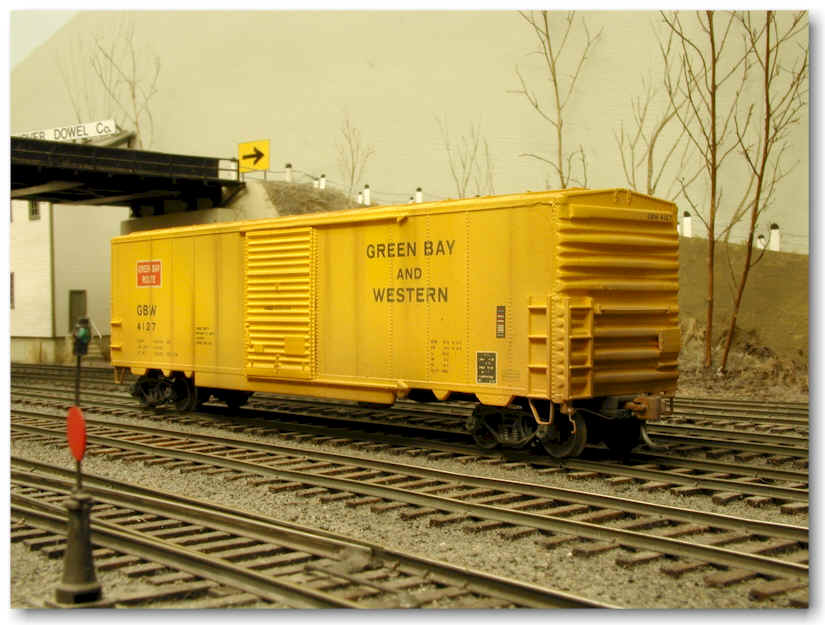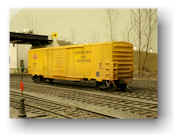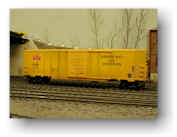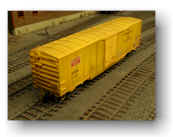Here's a summary of the modifications Craig made to the kit to
model this car:
Remove the roofwalk, plug the holes and add corner grab iron
to the B end where the ladders are still full height (an often
overlooked detail when modeling cars that have had their
roofwalks removed).
Reshape the side sill according to prototype photos, mostly
by following the notches cast on the inside of the Accurail
sill. No material was added for the sills, only removed.
Replace the cast-on stirrup steps with A-line
metal steps.
Remove the rivet detail removed from two seams on either side
of the door. (These seams were welded on the prototypes, when
the cars were stretched from 40' riveted cars.)
Lower the side and end ladders on the A-end (opposite the
brake wheel) of the car. This was a time-intensive part of
the project with lots of carving, filing and sanding here.
Carve off the high mounted tack boards on both ends (still
more carving, filing and sanding) and replace them with tack
boards from the scrap box in the lower position.
Add some grab irons to the boxcar ends (Craig's were were spares
from an InterMountain
Railway Company 60-foot PS-1 boxcar kit) and add Detail
Associates uncoupling levers.
Touch-up the paint with Floquil
reefer yellow paint and then a coat of Floquil Hi-Gloss.
Finally, he added extra decals (ACI plate and COTS stencil),
then weathered the car.
These photos were shot on Jack Ozanich's Atlantic Great Eastern
layout. Jack graciously allowed Craig Wilson to use his
digital camera to shoot these photos.




